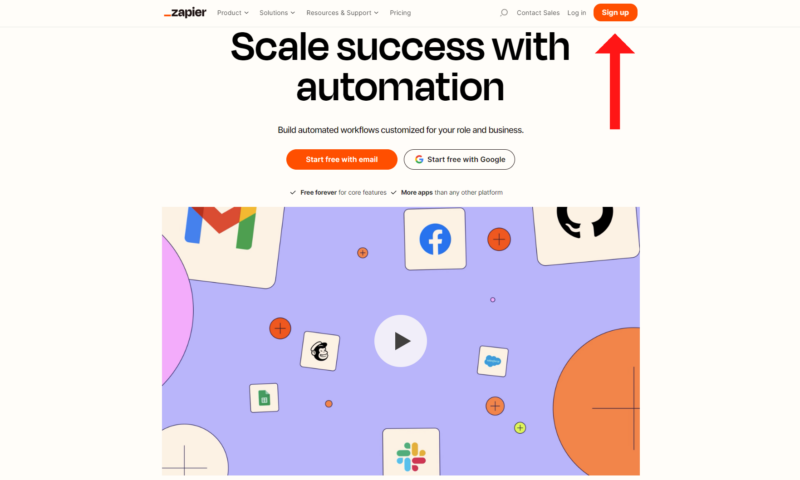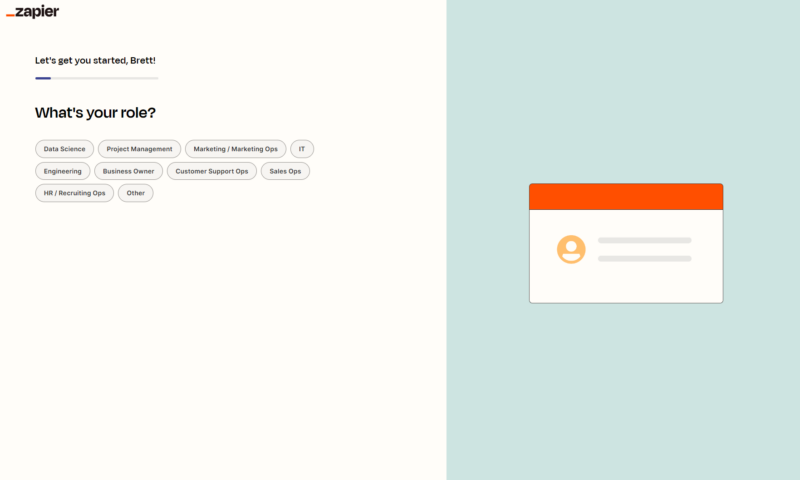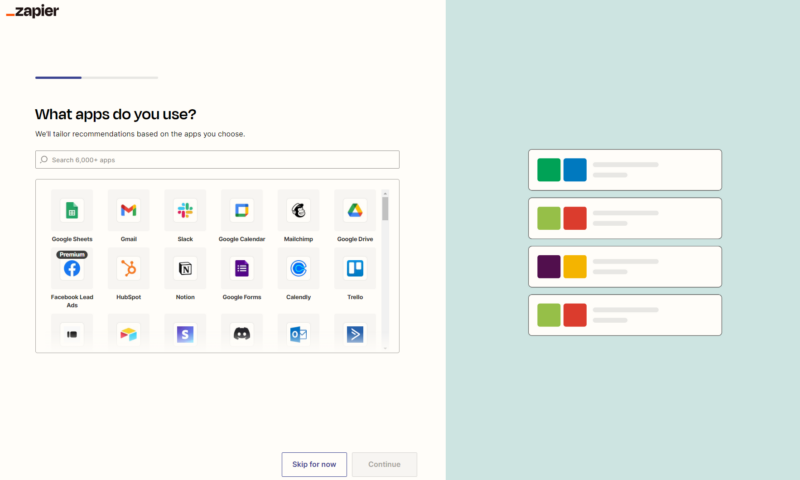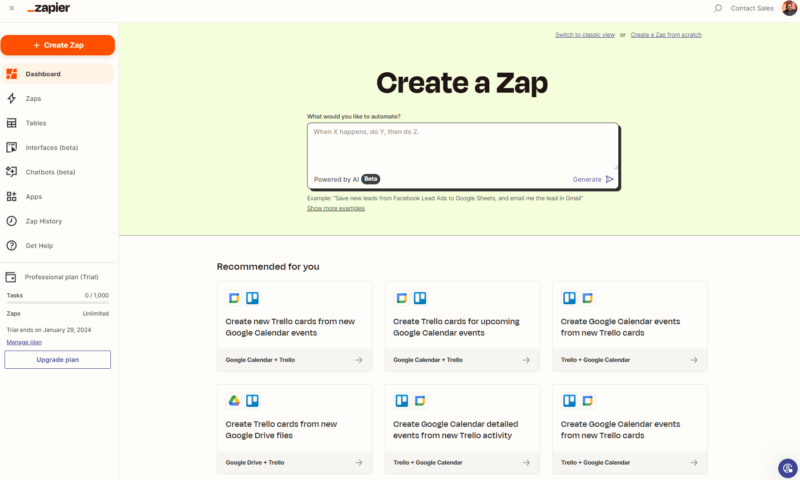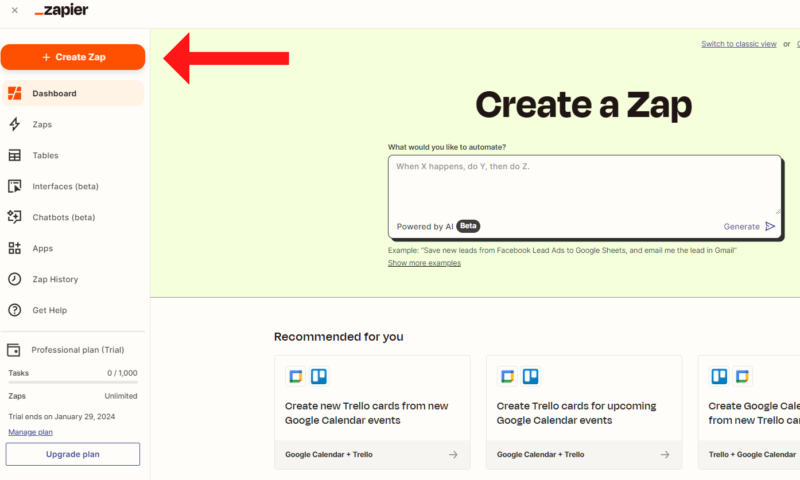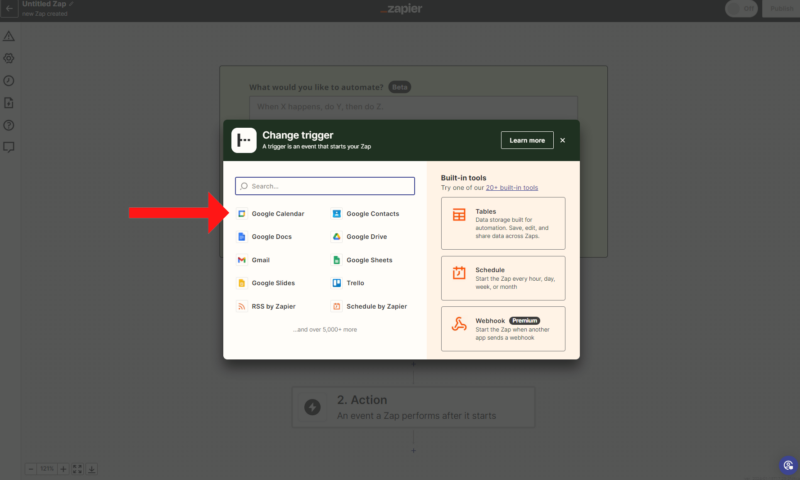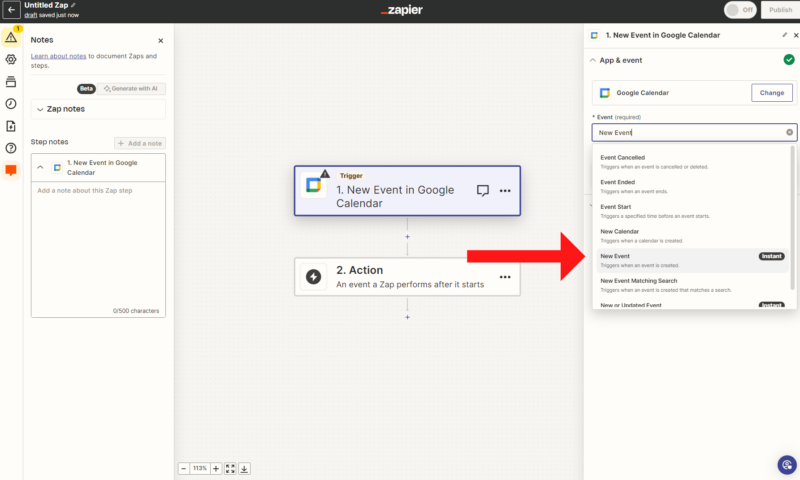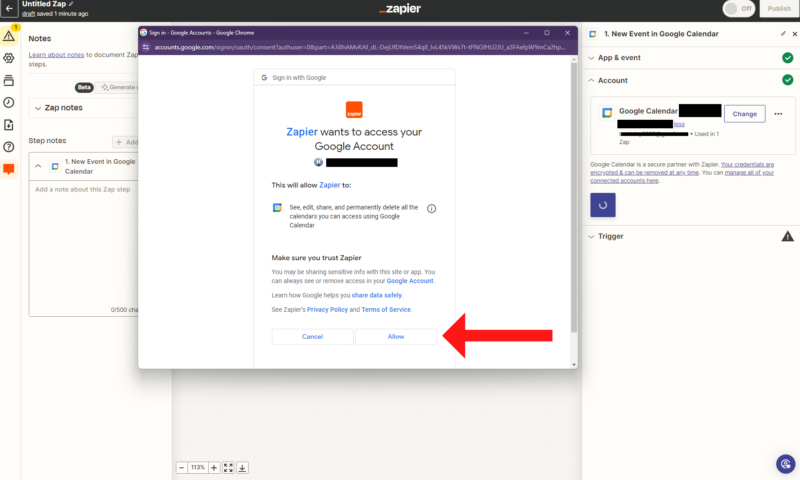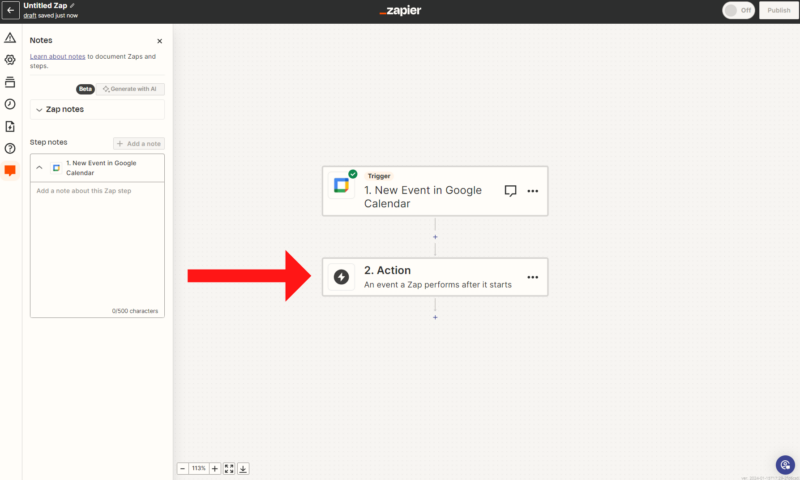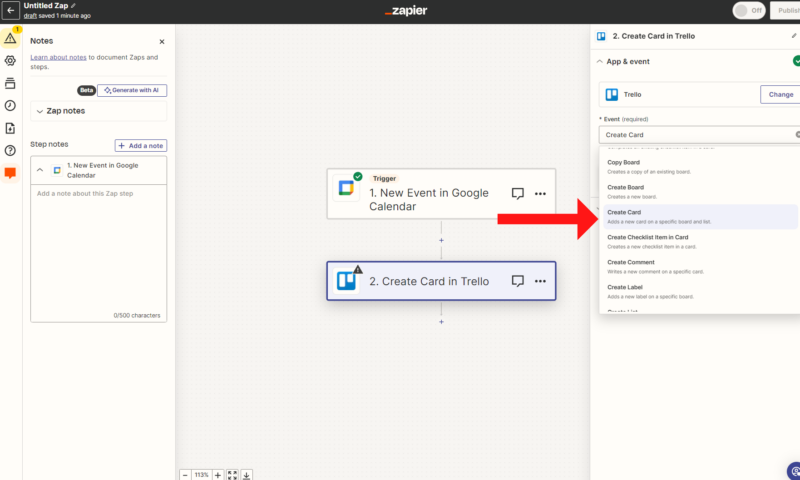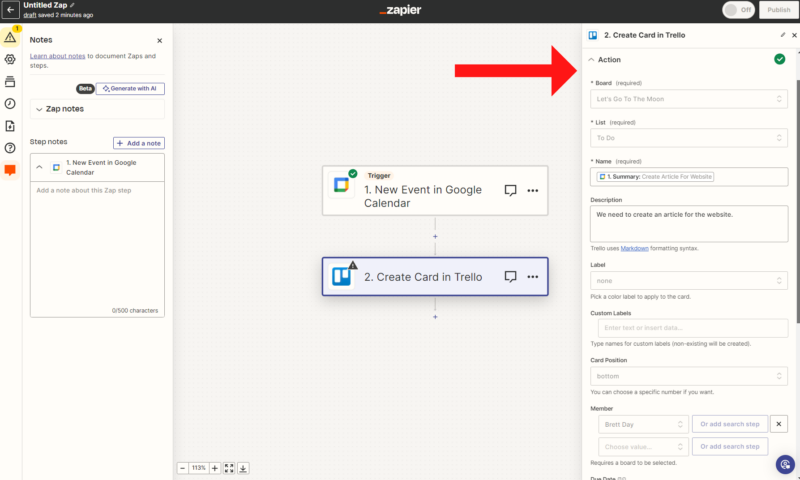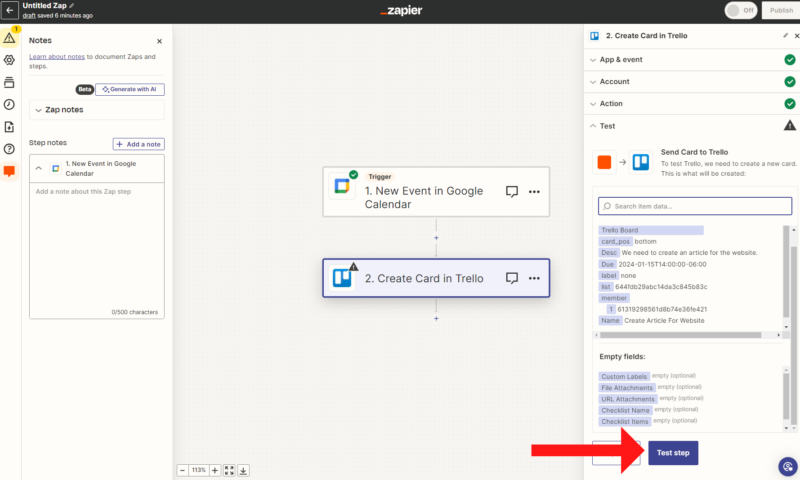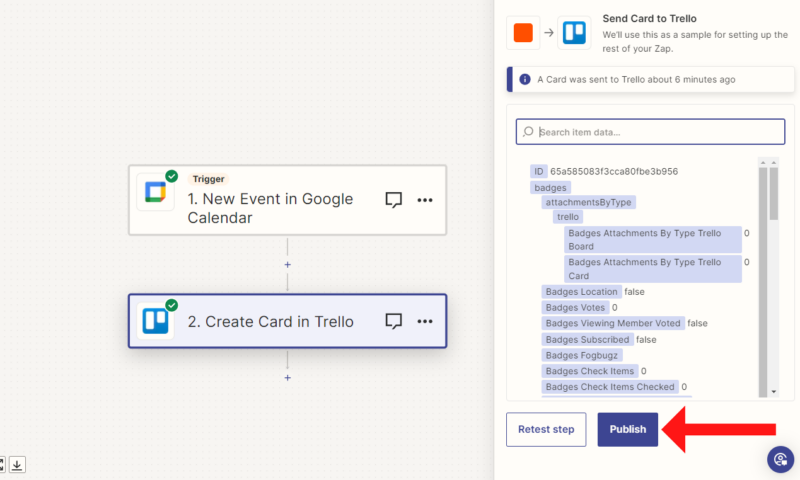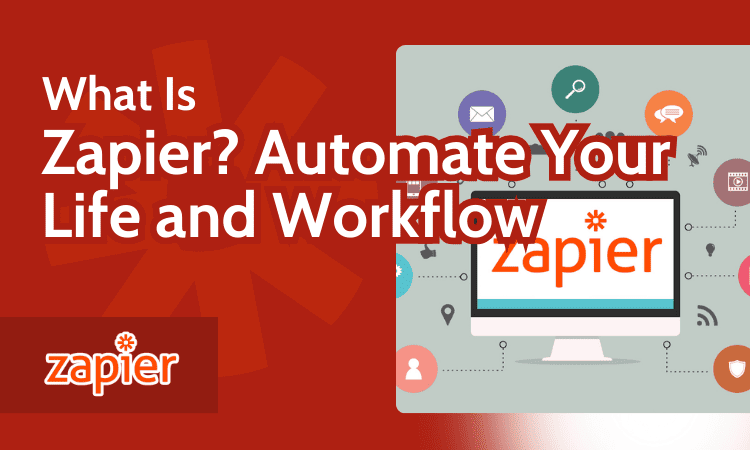
What Is Zapier? How Does It Work in 2024? Search
Cloudwards.net may earn a small commission from some purchases made through our site. However, any earnings do not affect how we review services. Learn more about our editorial integrity and research process.
Why you can trust us
- 407 Cloud Software Products and Services Tested
- 3056 Annual Software Speed Tests
- 2400 plus Hours Usability Testing
Our team of experts thoroughly test each service, evaluating it for features, usability, security, value for money and more. Learn more about how we conduct our testing.
Key Takeaways: Zapier Automation
- Zapier can be used to integrate multiple web apps and build automations for workflows and repetitive or boring tasks, saving you time, effort and money.
- A simple, no-code user interface makes it easy for newcomers to create simple or complex automations for more than 6,000 platforms.
- Zapier offers a solid free plan, and several paid plans exist for those who want to use Zapier to create many automations.
Modern project managers handle complex projects that often require multiple pieces of software, which can be hard to manage. Fortunately, Zapier — which can integrate many platforms — can be a lifesaver for those who wish to automate tasks and save time. If you want to learn about automation and become hyper-efficient, our “What Is Zapier?” guide is for you.
By the end of this guide, you’ll know what Zapier is, what it can do, how to sign up for its generous free plan and how to create your first zap (automation). Before you know it, you’ll be able to tame all of your business software and create automations that can save you a significant chunk of time and your sanity.
Meet the experts
Learn more about our editorial team and our research process.
What Is Zapier?
Founded in 2011, Zapier is a task automation service that allows end users to connect more than 6,000 web apps and build time-saving automations for repetitive, time-consuming tasks in project management and beyond.
Once users have connected apps to Zapier, they can quickly build automations to automate tasks. End users can automate tasks such as moving cards between columns in the best workflow management software and can create tasks based on entries in a Google Sheet or Google Docs project. There’s very little that can’t be automated. If you can think of an automation, you can create it.
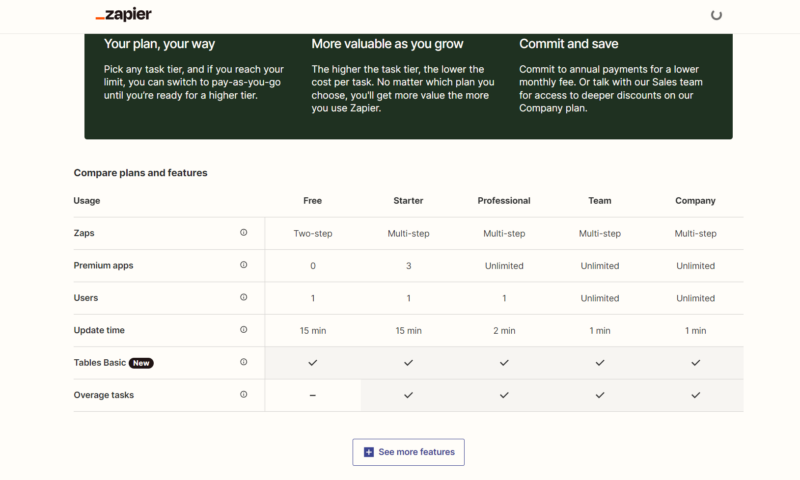
Zapier offers plans to suit most budgets and needs.
Zapier is similar to Make.com and offers users a few plans. There’s a solid free plan that supports 100 two-step automations per month. The four paid plans — Starter, Professional, Team and Company — support multi-step zaps and vary in price. Though the plans can be costly, there’s no doubt a Zapier integration and automation plan will suit your needs.
What Does Zapier Do?
Zapier can build time-saving automations between more than 6,000 platforms. For example, if you’re tired of sending Trello task status updates to teammates on Slack, you can connect Trello and Slack to Zapier and create an automation that automatically messages team members with task updates.
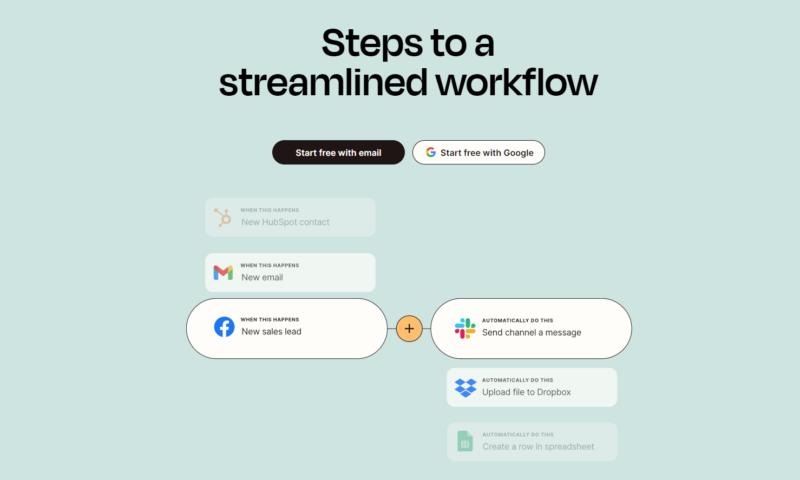
Zapier lets users quickly build automations for tedious tasks.
Another example is building an automation to create cards in Trello with assignees, a due date, a description and even a checklist when you create and share a new event in your Google Calendar. The sky’s the limit when it comes to creating automations.
What Is Zapier Used For?
As previously mentioned, Zapier is used to create automations across two or more web-based platforms. Businesses in many industries can use Zapier to save time by eliminating the need for project managers, Scrum Masters and leaders to complete repetitive tasks.
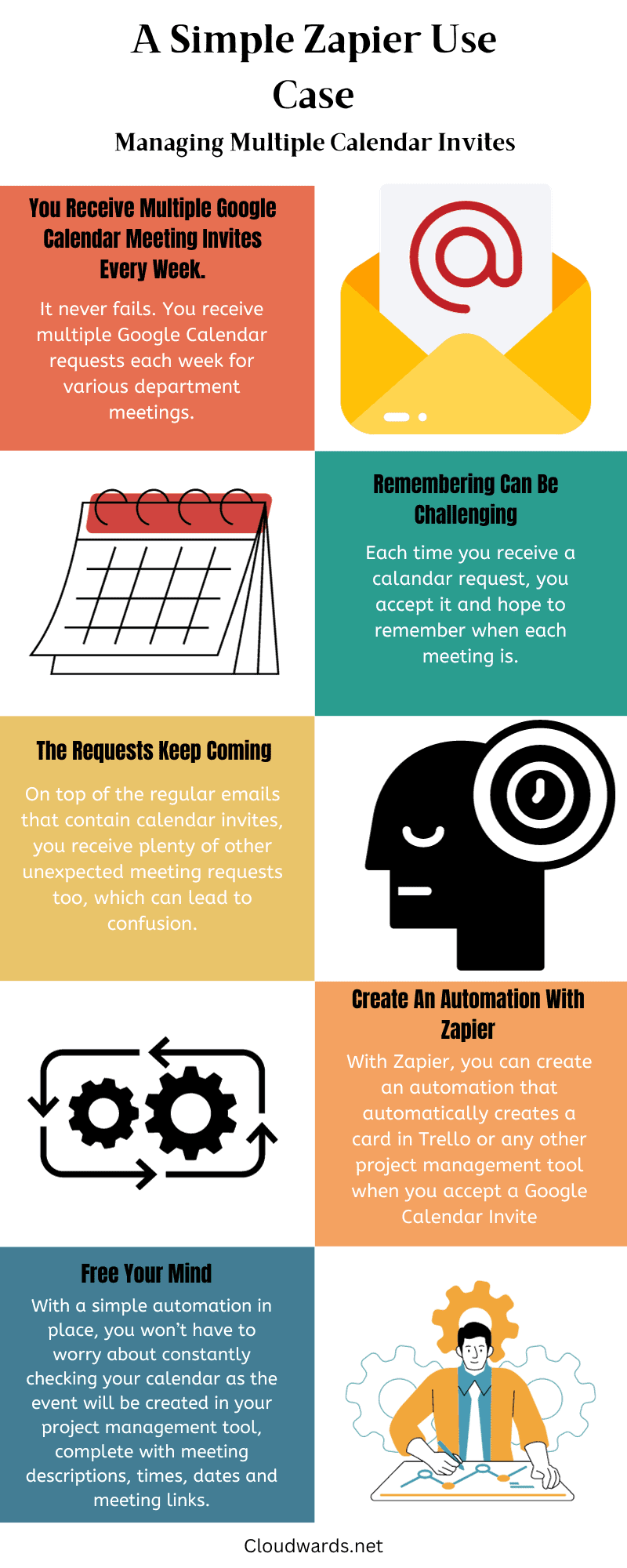
You can use Zapier to create all kinds of automations that can make your work life easier.
Zapier can automate task card archiving once a job is complete in one of the best free project management platforms. Another example is creating automations to upload email attachments from team members to one of the best cloud storage services.
The idea is to free up as much time as possible by automating tedious tasks that take away from more pressing issues.
Glossary of Common Zapier Terms
Zapier is pretty easy to get to grips with, but a few terms may throw you for a loop. To ease confusion, we have collected a list of common Zapier terms that you should become familiar with.
- Zap — An automation or link between two or more web applications
- Trigger — An event that starts a zap
- Action — An event (or multiple events) that completes a zap
- Task — An action that a zap performs
- Workflows — The preferred term in Zapier for automations
- Update time — The frequency at which Zapier checks for triggers
Now that you know what Zapier is and what it can do, we will show you how to set up a free Zapier account and how to create your first zap.
How to Set Up a Zapier Account
- Visit Zapier.com
To sign up for a free or paid Zapier account, you’ll need to visit the main Zapier website. For this guide, we’ll use the free version, which comes with a 14-day trial of Zapier’s paid features. From the homepage, click the orange “sign up” button in the top right corner. Alternatively, you can sign up with an email address or a Google account.

- Tell Zapier About Yourself
Once your account has been created, Zapier will ask for information about you and how you’ll use the platform. First, you’ll select your company role, and then you’ll tell Zapier what you want to automate.

- Select the Applications You Use
Next, select the apps you use. You can search and choose from more than 6,000 options. Click to select the applications once you have found them. After choosing your apps, you’ll be asked whether you’re familiar with automation and how big your company is. Our experts recommend selecting “I’m new to automation,” prompting Zapier to give you tips and tricks.

- Explore the Dashboard
Once the onboarding is complete, you’ll be taken to your Zapier dashboard. Take a few moments to familiarize yourself with the layout. You’ll see the main navigation menu with a “create zap” button on the left, the AI-powered “create a zap” text box front and center, and the “recommended for you” zaps at the bottom.

How to Set Up Your First Zap
- Create a Zap with the “Create Zap” Button
In this tutorial, you’ll create your first zap using the “create zap” button in the left navigation menu. Click the “create zap” button to get started.

- Choose Your Trigger Application
You will set up a simple automation to create a Trello card from a Google Calendar entry. Once you’ve clicked “create zap,” you’ll see the Zap builder. From here, click on “trigger.” This will generate a list of trigger applications. Select “Google Calendar.”

- Select the Trigger Event
Once you have selected your trigger app, you must choose a trigger event. This is what tells Zapier what will trigger your automation or zap. In the right-hand menu, under the event heading, click the drop-down menu, select “new event” and then click “continue.”

- Connect to Your Trigger App
Zapier will now ask you to connect to your trigger app account. In the right-hand menu, next to “connect Google Calendar,” click “sign in.” Choose your Google account and then click “allow.” Zapier is now connected to your Google account. Click “continue” to select which Google Calendar you want to use. Once selected, click “test step” to ensure that your action works.

- Create an Action
Now that you have the trigger application and the trigger event chosen, you need to create an action. From the main screen, click “action.” Then, just like before, choose the action application — in this case, Trello, as that’s where you want Zapier to create a new card from the calendar entry.

- Choose the Trello Event
You now need to tell Zapier what you want to happen in Trello. From the menu, select the drop-down list under “event,” choose “create new card” and then select “continue.” Like before, you’ll need to connect Trello to Zapier. Follow the onscreen instructions to do so.

- Choose Your Trello Board
Once connected, you must tell Zapier which Trello board to use, which column the card should be placed in and the card name, which can be pulled from the event’s name in your calendar. You can perform these actions under the “action” header in the right-hand menu. These fields must be completed. You can fill in the other fields as desired.

- Test the Step
To ensure everything works as intended, scroll to the bottom of the right-hand menu and click “test step.” If there are any issues, Zapier will tell you what’s wrong and ask you to fix the error. We also recommend heading to Trello to ensure that Zapier created the card. If you do not see the card, click the “retest step” button.

- Publish Your Zap
Once you run the test and everything looks okay, it’s time to publish the zap. Click the “publish” button to save your zap. Every time the trigger event occurs, a card will be created in Trello for you.

That’s all it takes to create simple automated workflows in Zapier. Whether you’re using the tool to connect some of the best project management platforms or to create zaps for other workflows, the steps are the same. You can create a new zap for business processes in minutes, and they can be as straightforward or as complex as necessary.
Final Thoughts
Zapier is an excellent alternative to IFTTT. Thanks to its simple signup process and user-friendly interface, users can set up a zap within minutes of creating an account.
The free plan, which comes with a 14-day trial of all Zapier tools, is the best place to start. After the trial, if you need more than what the free version offers, you can quickly sign up for one of the paid plans and be on your way to an automated work life.
What do you think of Zapier? Do you find it easier to use than Make.com or IFTTT? Which apps have you made automations for? Did you find our guide easy to follow? Let us know in the comments, and as always, thanks for reading.
FAQ: Guide to Zapier
-
You can use Zapier to create automations between multiple web applications.
-
Yes, Zapier is very useful — it can help you create an automated workflow and automate repetitive tasks between two or more apps.
-
Zapier is popular thanks to the number of applications it supports, its ease of use and its free and paid plans.
-
Yes, Zapier is free to use thanks to a free plan that features all of the platform’s core features.
You can use Zapier to create automations between multiple web applications.n”}},{“@type”:”Question”,”name”:”Is Zapier Actually Useful?”,”acceptedAnswer”:{“@type”:”Answer”,”text”:”
Yes, Zapier is very useful — it can help you create an automated workflow and automate repetitive tasks between two or more apps.n”}},{“@type”:”Question”,”name”:”Why Is Zapier So Popular?”,”acceptedAnswer”:{“@type”:”Answer”,”text”:”
Zapier is popular thanks to the number of applications it supports, its ease of use and its free and paid plans.n”}},{“@type”:”Question”,”name”:”Is Zapier Free to Use?”,”acceptedAnswer”:{“@type”:”Answer”,”text”:”
Yes, Zapier is free to use thanks to a free plan that features all of the platform’s core features.n”}}]}]]>
Let us know if you liked the post. That’s the only way we can improve.
Also interesting
Last published on Cloudwards:
Originally a software engineer, Aleksander decided to leave the office lifestyle behind to live as a digital nomad. He now spends his time writing about technology and tourism, which allows him the freedom to call many different places home. When he’s not writing or editing, he likes to read fantasy/sci-fi, listen to podcasts about history and politics and travel.
Last published on Cloudwards:
Igor is one of the fact-checking editors for Cloudwards. As a man of many talents, he has worked in customer service and SEO, is proficient in video and audio editing, and is also a trained opera singer, gracing European stages with his hometown church choir. Outside of work, Igor’s passions encompass music performance, fitness and capturing moments through travel photography. With a life enriched by diverse pursuits, Igor’s story unfolds rapidly, with many of the chapters yet to reveal themselves.
Source

